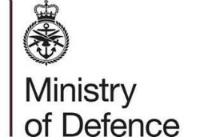In the news this morning, EU leaders holding late-night talks in Brussels have agreed to relocate tens of thousands of migrants who have arrived in Italy and Greece.
Defence spending
There are various stories on defence spending in today’s newspapers. Of note, The Sun newspaper publishes its own defence manifesto, calling for the department’s budget to be protected and outlining how they would spend it. The article states that as the world grows more dangerous, defence spending must never fall below 2% of GDP, referencing threats the UK faces from ISIL and Russia. The Times reports on comments from the new chair of the defence select committee, Julian Lewis, where he says that Britain should be spending closer to 3% of GDP on defence.
Our position is as follows:
We know how vital strong defence is - that is why we have the fifth largest defence budget in the world where our Armed Forces stand tall. This year, we are one of just five NATO nations who will spend 2 per cent of our GDP on defence and over the next ten years we will spend over £160 billion on military kit.
MOD aid projects
The Times reports today that the MOD has spent thousands of pounds painting a school in Kenya as part of Britain’s aid programme after the military was given a target on overseas development. In fact, the painting of the school was part of a long-established pattern of good will activity with the local community which is common throughout the Armed Forces. Our statement on the wider issue of Official Development Assistance (ODA) is here:
Any suggestion that defence spending is being redirected away from departmental priorities is untrue. We spend our budget where it is needed and a key part of that includes conflict prevention and engagement, elements of which meet the definition of Official Development Assistance (ODA).
Major projects report
There are various articles following a Cabinet Office report on the status of major government projects. The FT writes that a plan to hire part-time soldiers to help plug the gaps left by steep defence cuts “appears to be unachievable”. The article notes that the Reserves project and Universal Credit have been given red ratings with HS2 given an amber/red rating. Reference is made in the articles to the lack of commitment to spend 2% of GDP on defence and the FT references the Chancellor’s decision to cut £500m from the MOD budget. The Times references the Army Basing Project stating that a number of those returning to Britain this year will not have anywhere to stay because o planned infrastructure with a £1 billion budget has not yet been built.
An MOD spokesperson said:
There have been delays in putting in place the plans for some of new and refurbished basing and accommodation to meet the Army's future needs. But this will not delay the return of troops from Germany. Moves will only take place once appropriate accommodation and schooling is in place. For units where some infrastructure will not be ready in time, temporary solutions, agreed by the Army chain of command, will be implemented until the permanent solutions are delivered. We have overseen a major overhaul of the resourcing, governance and planning of the project over the intervening period and this is already generating positive results.
Cyber attacks
The FT reports that the MOD is being hit by “hundreds if not thousands” of cyber attacks every day. Brigadier Alan Hill, the head of Operate and Defend, told the paper that the UK military is a magnet for international espionage attempts with systems logging more than 1m suspicious incidents every 24 hours. The article notes that cyber defence has become one of the UK’s top priorities but is among the most sensitive areas of Government. Although other areas of military spending are expected to come under pressure, Brig Hill said that he expected “continued investment at scale” in cyber.
Image of the day

Royal Navy Type 45 destroyer HMS Defender and Eurofighter Typhoons from the RAFs II(AC) Squadron have been training off the coast of the UK for the past few days, honing their air-maritime skills.
Under the exercises, Royal Navy Fighter Controllers on board the warship controlled the Typhoon jets, giving the two Services the opportunity to test how they would work together on live operations.
Follow us on Twitter and don’t forget to sign up for email alerts.
